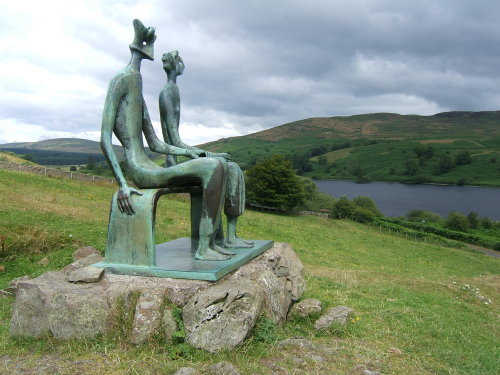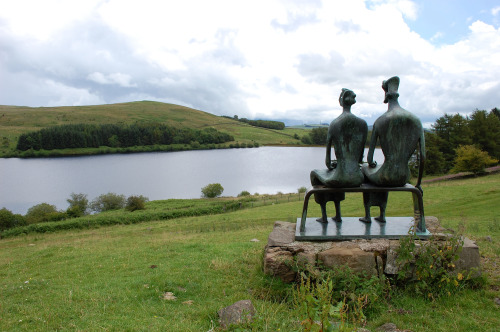Henry Moore, King and Queen, Glenkiln, Scotland, c. 1952-3
“The ’King and Queen’ is rather strange. Like many of my sculptures, I can’t explain exactly how it evolved. Anything can start me off on a sculpture idea, and in this case it was playing with a small piece of modelling wax. It was at a time when I was thinking of starting my own bronze foundry. I had a young sculpture assistant who was keen on the technical side and wanted to know about casting bronze. I decided to cut out the first stage, which would have meant making a plaster cast, and to model directly in wax. Whilst manipulating a piece of this wax, it began to look like a horned, Pan-like, bearded head. Then it grew a crown and I recognised it immediately as the head of a king. I continued and gave it a body. When wax hardens, it is almost as strong as metal. I used special strength to repeat in the body the aristocratic refinement I found in the head. Then I added a second figure to it and it became a ‘King and Queen’. I realise now that it was because I was reading stories to Mary, my six year old daughter, every night, and most of them were about kings and queens and princesses … Eventually one of these sculptures went to Scotland [Glenkiln], and is beautifully placed by its owner, Tony Keswick, in a moorland landscape. I thank he rather likes the idea of the ‘King and Queen’ looking from Scotland across to England.”
wanderingbutnotlost11 liked this
 youngsalvadordali11 reblogged this from nickkahler
youngsalvadordali11 reblogged this from nickkahler omcgowan reblogged this from nickkahler
joecowtoy liked this
earl3d liked this
pastel-carnival liked this
woniuke liked this
interiorsandart reblogged this from nickkahler
nickkahler posted this

